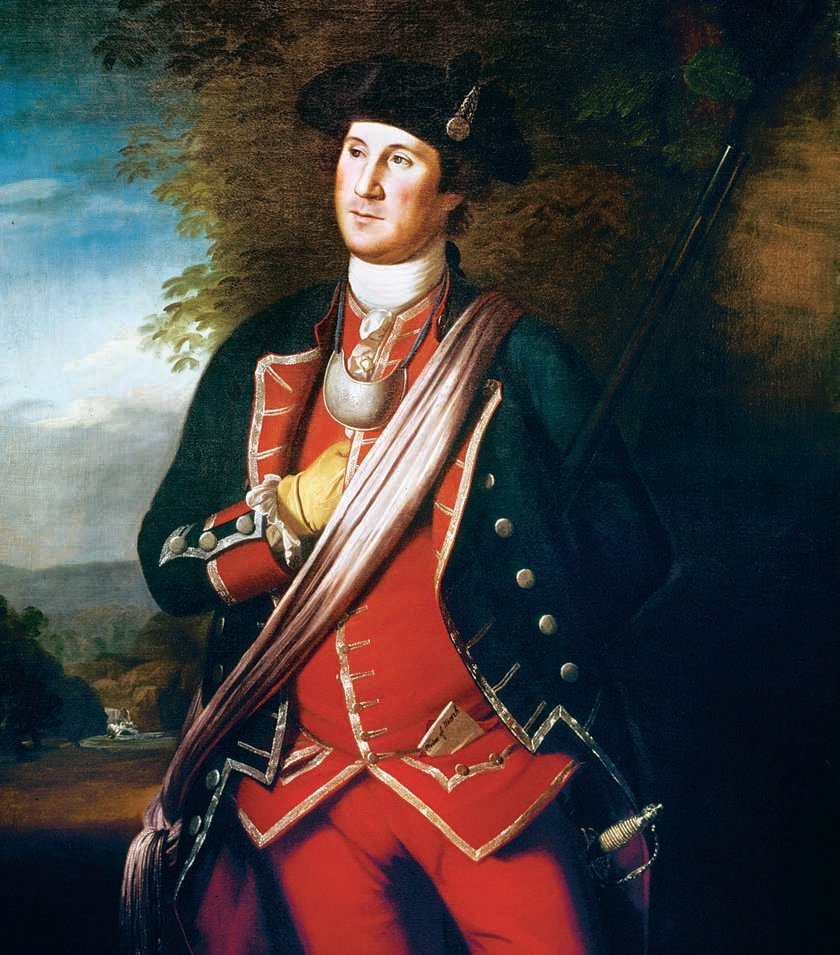Peale’s George Washington Portrait Loaned for Semiquincentennial Celebrations
Peale’s George Washington Portrait Loaned for Semiquincentennial Celebrations
The one-of-a-kind portrait will be displayed across Virginia over the next year and a half.
(“George Washington as Colonel in the Virginia Regiment,” by Charles Willson Peale, 1772. | SOURCE: Washington-Custis-Lee Collection, Washington and Lee University)
Charles Willson Peale’s “George Washington as Colonel in the Virginia Regiment” is being loaned by Washington and Lee University to two institutions commemorating America’s semiquincentennial. Yet, the piece’s loan, the second in under a decade, is not without controversy.
W&L will loan the portrait to the Jamestown-Yorktown Foundation, which is working with the Virginia Museum of History and Culture to host the exhibition titled “Give Me Liberty: Virginia and the Forging of a Nation.” During the loan, the portrait will be displayed in the VMHC in Richmond until January 2026, after which it will spend another year in the American Revolution Museum in Yorktown.
The portrait formerly hung in Lee Chapel, National Historic Landmark, until its removal to the Reeves Museum of Ceramics, following a multi-year stint at George Washington’s Mount Vernon from 2018 to 2021. The portrait’s history of being loaned has stoked resentment among some.
Kamron Spivey, ‘24, said he felt disappointed “because that is not the first time I’ve seen the portrait … leave campus.” Isra El-beshir, W&L’s Director of Art Museum & Galleries, told The Spectator that “Our loan process follows rigorous ethical and legal standards, guided by the Office of the General Counsel and the American Alliance of Museums, to ensure the responsible stewardship of the works in our care. Decision-making related to museum loans, exhibitions, and acquisitions falls to the professional staff stewarding our collection.”
Spivey, who works as campus director for The Generals Redoubt, a W&L alumni association, additionally took issue with the loan’s lack of prior public notice. Spivey was surprised to find the portrait missing from W&L’s Reeves Museum of Ceramics on March 5, for which the museum’s docents had no answer. The loan’s public notice was delivered over a week later, with the announcement published on March 13.
(W&L’s Reeves Museum of Ceramics, where Peale’s Washington portrait is usually displayed. | SOURCE: The Generals Redoubt / Kamron Spivey)
This lack of public notice baffled Tom Camden, ‘76, former head of W&L’s Special Collections and a noted public historian. “There is no reason for … this secrecy,” he said, adding, “I don’t understand why the public relations department wouldn’t be more upfront with this.”
“When you take a portrait like that out of the Reeves Center, there should have been a full explanation put in place for people to see,” Camden said. “When you haven’t even told your docents,” he argued, it raises questions about the removal’s motivations.
Spivey asserted that W&L’s motivations for loaning out the piece, instead of raising awareness to a larger audience, were more nefarious. “It isn’t a sign of good faith by the university for wanting to show the portrait to a wider group,” he said, continuing, “it’s just a way for the university to get rid of it… It is very dishonorable, the way they have gone about this.”
Spivey argued that W&L often has hidden its history. “The problem is that the university doesn’t display its Americana for the students and broader community that visits here,” he said. “People travel from all over the world to visit” W&L’s campus, particularly Lee Chapel, and “the Peale portrait is another piece visitors could see when they visit the campus.”
Spivey noted that the loan coincides with the removal of Old George, the 1842 wooden statue of George Washington, which formerly sat atop Washington Hall, from W&L’s Special Collections as it undergoes renovations. He points to this statue as “another significant Washington artifact that you can no longer see in Lexington.”
Charles Willson Peale’s portrait is universally held to be one of W&L’s most valuable pieces. The portrait’s value highlights why some are annoyed at it being loaned away.
Camden, who had a full-size replica in his office during his time as director of Special Collections, showed great appreciation for the piece. He said that for “any institution that has a Peale portrait, it becomes one of their crown jewels.” W&L’s alumni shared his admiration, often commenting on the replica painting, which served as Camden’s backdrop on Zoom calls.
“It’s nationally known and … a national treasure,” he said, adding that the painting, “the first portrait of him in that uniform,” is “probably the most valuable piece owned by the school.”
El-beshir would not comment on the Peale portrait’s monetary value, asserting that W&L adheres “to strict ethical guidelines and policies regarding the confidentiality of appraisal and insurance information.” Instead, she argued “that the true value of this painting lies in its cultural and historical significance to the University and the American people, which far exceeds any monetary assessment.”
Camden argued that another course of action would have been appropriate to celebrate America’s history, while keeping the portrait on campus. “The Peale portrait belongs to the students and the alumni; it doesn’t belong to the museums,” he said. While “having it on display so it can get a wider audience” is important, he believes, “the university could have done an exhibition of the same nature.”
No one denied the importance of artwork to celebrating America’s history, particularly George Washington’s connection to the forthcoming semiquincentennial. Professor Lucas Morel, the John K. Boardman Professor of Politics and head of the Politics Department at W&L, described artwork as “supremely important” to celebrating history. Morel, who serves on the United States Semiquincentennial Commission, commonly known as America250, argued, "History isn’t learned just through books.”
“What comes to mind when you think of American history: things you’ve read or things you’ve seen? Probably both,” he said. “Did most people read about Washington crossing the Delaware, or did most people see it? … They saw that painting,” he continued, referencing Emanuel Leutze’s “Washington Crossing the Delaware,” a copy of which hangs in W&L’s Washington Hall.
(“Washington Crossing the Delaware,” by Emanuel Leutze, 1851. | SOURCE: The Metropolitan Museum of Art)
“The display of art, whether it's painting, sculpture, statues, monuments, tells stories about important people and important moments in a nation’s history,” Morel said, adding, “Artwork indicates the things we value and reflects what we believe is important.”




